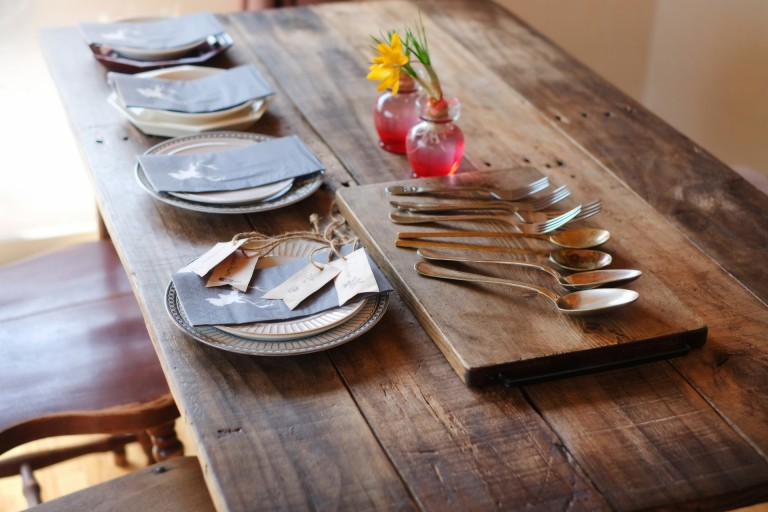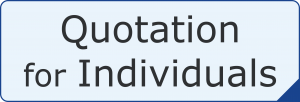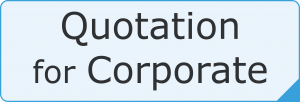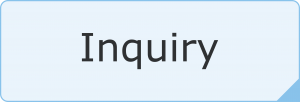公開日:2021/07/07 /
This guide is for Japanese residents foreigner who is trying to study import tableware and related item.
If you have any questions, please do not hesitate to contact us.
Tableware is a familiar commercial product, and many people want to import stylish plates and cute water bottles.
However, since tableware comes into direct contact with food and mouth, it is subject to the Food Sanitation Law and requires careful investigation than ordinary imports, so care must be taken.
Here is an explanation for those who are considering importing tableware for the first time.
1.WHY DO YOU NEED TO REPORT?
Tableware is subject to the Food Sanitation Law because it comes into direct contact with food.
Since tableware, utensils used for food, packaging materials, etc. are used in direct contact with food, the food may be contaminated by the elution of heavy metals and chemical substances contained in them.
Tableware that may be harmful to human health cannot be manufactured, sold or used.
Therefore, when importing tableware for the purpose of selling or commercial use, it is necessary to submit the “Food Import Notification Form” to the Imported Food Monitoring Section of the Quarantine Station of the Ministry of Health, Labor and Welfare in the same way as when importing food and related items.
Therefore, depending on the material, the importer is an inspection agency registered by the Minister of Health, Labor and Welfare or a public inspection agency of the exporting country, in order to prove that it meets【The standards of the Food Sanitation Law.(Self-inspection)】must be done in Japan.
2.PRODUCTS EXAMPLE
◯Tableware : Plates, forks, spoons, bowls, cups, straws, lunch boxes, etc.
◯Cooking utensils : kitchen knives, pots, slicers, ladles, tongs, chopsticks, etc.
◯Kitchen appliances : Tubes through which water from coffee makers pass, parts for stocking coffee beans, parts for mills, parts for electronic jar kilns, mixers, etc.
◯Others : Food-handling toys, food-hit parts, toys for infants, etc.
Please note that the above products must be notified to the Food Monitoring Division of the “Food Import Notification Form”.
* Whether or not standard inspection (self-inspection) is performed depends on the material and application.
3.CONFIRMATION OF MATERIAL
✍Check the material
Depending on the material, the “Inspection of Tableware Standards (Voluntary Inspection)” may not be necessary.
If the product comes into contact with food, “Notification of Import of Food, etc.” is required.
❏Materials for which standard inspection (voluntary inspection) is required
- Made of Pottery (ceramic)
- Made of Plastic
- Made of Glass
- Made of Paper and etc.,
❏Materials that do not require a standard inspection (voluntary inspection)
- Made of Steel
- Made of Aluminum
- Made of Stainless Steel and etc.,
✍Confirmation of standards
If the material is the same but the shape (cup, plate, bowl, etc.) is different, each will be subject to inspection.
In the case of large quantities of products, it is difficult to check all products during sampling, so it is necessary to clarify in advance what products are going to be inspected.
Therefore, it is necessary to have a “specification sheet” that describes the shape and material after the product.
Please note that different colors and patterns are also considered as different specimens.
4.REQUIRED DOCUMENTS
- Invoice and packing list : Prepared by the exporter.
- Product specifications (showing material and shape) : Prepared by the exporter. Or, the importer may prepare it based on the data submitted by the exporter.
- AIR WAYBILL(AWB) : In the case of air transportation. Issued by the forwarder of the exporting country. or shipper.
- SEA WAYBILL(SWB) : In the case of ocean transportation. Issued by the forwarder of the exporting country. Or shipper.
- ARRIVAL NOTICE : In case of ocean transportation. Issued by shipping company just before arrival at port.
- ARRIVAL NOTICE : In case of air transportation. Issued by Airlines and shpping company just arrival at airport.
5.Import Customs Clearance “Notification of Import of Food,
【Standard Inspection (Voluntary Inspection)】
Notification of Importation of Foodstuffs” is required for the importation of tableware.
The Food Inspection Division of the Ministry of Health and Welfare will examine the product and if it is determined that there is no problem, a “Certificate of Inspection” will be issued.
In this article, we will explain the process from the application to the issuance of a certificate for products that require a standard inspection (voluntary inspection).
✍①Arrival of cargo
When goods arrive from overseas, they are placed in bonded storage at an airport or seaport.
The cargo cannot be picked up until customs clearance is granted.
If a standard inspection (self-inspection) is required, sampling for the inspection is done in the bonded warehouse.
After sampling, the cargo is taken to an inspection agency.
✍②Notification of Importation of Food, etc.
Prepare the application documents based on the invoice, packing list, and product specifications, and apply to the Food Surveillance Division of the Ministry of Health and Welfare with the necessary documents.
When the Food Inspection Division confirms that the tableware requires a standard inspection (self-inspection), they will instruct you to undergo a standard inspection (self-inspection).
If you are instructed to undergo a voluntary inspection, you must undergo a voluntary inspection.
The inspection items are described in the guidance, and inspections are conducted according to the inspection items.
※Even if the product is made of a material that does not require a standard inspection (self-inspection), a “Notification of Importation of Food” is required.
✍③Taking out samples
Goods stored in bonded warehouses may not be taken out without permission from customs.
For standardized testing of tableware, samples must be sampled and transported to an inspection organization.
Therefore, before sampling, you need to go through the “Temporary Removal of Samples Procedure”.
If you submit an “Application for Permission to Carry Out Samples” to the director of customs and obtain permission, you can proceed with the sampling.
※In principle, temporarily removed samples must be returned to the bonded area within the period designated by the Director General of Customs.
However, if the samples taken out within the designated period and the foreign goods remaining in the bonded area are approved for import together, they do not need to be returned to the bonded area.
✍④Sampling
Sampling is conducted at the bonded warehouse.
In the presence of the staff of the bonded warehouse, the staff of a third party inspection organization removes the required quantity of goods from the stored goods.
The remainder will remain in storage until customs clearance is granted.
The sampled goods are then brought to the laboratory’s facility to be tested for the presence of harmful substances.
It takes about a week to get the results (depending on the nature of the test), so please wait until you get the results.
✍⑤Test results
A “test report certificate” will be issued by the testing organization for the results of the analysis.
From the next time you use this “Test Result Certificate”, you will no longer need to undergo the standard inspection (voluntary inspection).
However, please note that the certificate is only valid for specimens that have passed the test, and cannot be used for specimens of different types, colors, or materials.
※In contrast to food products, which must be renewed once a year, tableware does not need to be renewed if it has been analyzed once and passed the test items.
✍⑥Examination by the Food Surveillance Division
Submit the analysis results to the Food Inspection Division for review.
If there are no problems with the content of the application and the results of the examination, a “Certificate of Completion” will be issued.
This is the end of the “Notification of Importation of Food, etc.” process.
From the next time on, the same commercial product will not require a standard inspection (voluntary inspection), and import customs clearance can be proceeded with only the “Notification of Import of Food, etc.”.
✍Supplement: Test report of inspection conducted in the exporting country
If you meet the conditions, you can use the test report of the inspection conducted in the exporting country.
The Ministry of Health and Welfare (MHLW) has announced the following conditions for using this system.
The government of the exporting country recognizes a testing and inspection organization with a certain level of inspection capability in its own country, and lists it as a foreign public inspection organization if the government of the exporting country has made a request to the MHLW in advance.
If a test report issued by a foreign official inspection agency after prior inspection is attached to the notification, the guidance and inspection of the relevant item will be omitted. However, items that may change during transportation (bacteria, mold poisoning, etc.) are excluded.
In addition, there are two types of foreign official inspection organizations: those that cover food products exported from all countries/regions, and those that cover only food products exported from the country/region where the organization is located.
In short, if a certificate of test results from an inspection conducted by a foreign public institution registered with the Ministry of Health, Labor and Welfare is attached to the “Notification of Importation of Food, etc.” to the Food Surveillance Division of the Ministry of Health, Labor and Welfare at the time of importation into Japan, it can be substituted for a standard inspection (voluntary inspection) in Japan.
6.CUSTOMS DECLARATION
✍Customs duties
❏Plastic tableware and kitchenware
・Basic : 5.8%
・WTO ( World Trade Organization ) Agreement : 3.9%
・Preferential GSP* : FREE
*GSP (Generalized System of Preferences) is a system of special tariff measures for developing countries, under which developed countries apply tariff rates lower than those based on MFN treatment to developing countries’ domestic products, with the aim of increasing the export income of developing countries and promoting their development.
❏Tableware and kitchenware made of bamboo or wood (Class 44, Article 19)
✎Cutting boards made of bamboo
・Basic : 3.2%
・WTO Agreement : 2.7%
・Preferential GSP : 1.62%
・Special Preferential : FREE
・EPA : Free
✎Bamboo and wooden disposable chopsticks
・Basic : 5.6%
・WTO Agreement : 4.7%
・Preferential GSP : 2.82%
・Special Preferential Treatment : Free
・EPA :
Chile : 0.4%
Peru : 0.3%
Other : FREE
✎Other tableware and kitchenware made of bamboo or wood
・Basic : 3.2%
・WTO Agreement : 2.7%
・Preferential GSP : 1.62%
・Special Preferential : FREE
・EPA : Free
❏Tableware and kitchenware made of ceramics (Class 69, Article 11)
・Basic : 3.4%
・WTO Agreement : 2.3%
・Preferential GSP : FREE
・EPA : FREE
❏Tableware and kitchenware made of ceramics (Class 69, Article 12)
・Basic : 3.4%
・WTO Agreement : 2.3%
・Preferential GSP : FREE
・EPA : FREE
❏Tableware and kitchenware made of glass ceramic and lead glass (Class 70, Article 13)
・Basic : 4.6%
・WTO Agreement : 3.1%
・Preferential GSP : Free
・EPA : Free
❏Tableware and kitchenware made of steel, cast iron and stainless steel (Class 73, Section 23)
・Basic : FREE
・WTO Agreement : FREE
・EPA : Free
❏Tableware and kitchenware made of copper (Class 74, Section 18)
・Basic : FREE
・WTO Agreement : FREE
・EPA : Free
❏Tableware and kitchenware made of aluminum (Class 76, Section 15) 7615.10
・Basic : Free
・WTO Agreement : FREE
・EPA : FREE
✍Required Documents
- Invoice and Packing List : Prepared by the exporter
- Product specifications (showing material and shape) : Prepared by exporter. Or, the importer may prepare it based on the materials submitted by the exporter.
- AWB : In the case of air transportation. Issued by the local forwarder.
- SEA WAYBILL : In case of ocean transportation. Prepared by the local forwarder.
- ARRIVAL NOTICE : In case of ocean transportation. Issued by shipping company just before arrival at port
- ARRIVAL NOTICE : In case of air transportation. Airlines and forwarder just before arrival at the airport.
- PERMIT : Issued by the Food Audit Division of the Ministry of Health, Labor and Welfare
✍Declaration to Customs
Prepare an import declaration form based on the above documents, attach the “Certificate” issued by the MHLW, and declare it to the customs.
After the examination is completed and import duties and consumption taxes are paid, import permission is granted and the cargo can be picked up.
When you contact us, we will take full responsibility for the delivery of your goods.
7.SUMMARY
There are many people who would like to try importing tableware because it is a familiar commercial product.
However, there are many items that must be checked, and depending on the inspection results, importation may not be possible.
Therefore, we recommend the following flow for importing.
(1) First, please prepare the product specifications (size, weight, material, design with picture or photo).
(2) Present it to us, and we will confirm the details of the inspection (quantity of specimen, inspection period, and cost) with the inspection organization.
(3) Next, we will establish a track record in air transportation.
(4) We will transport the quantity required for the standard inspection (voluntary inspection) by air.
By reducing the quantity to the minimum necessary, we can minimize the storage fee during the inspection period, and minimize the disposal (destruction) cost and the loading back cost if the product fails the inspection.
(5) Once you have a track record in air transportation, you can use this track record to import large quantities (for sale).
*This track record can also be available in ocean transportation.
(6) By using the results, you can import without having to go through the standard inspection (voluntary inspection) again.
The above is the sequence of events.
We will support you from the initial consultation to importing for sale.
Please fill out the form below and we will get back to you as soon as possible.



